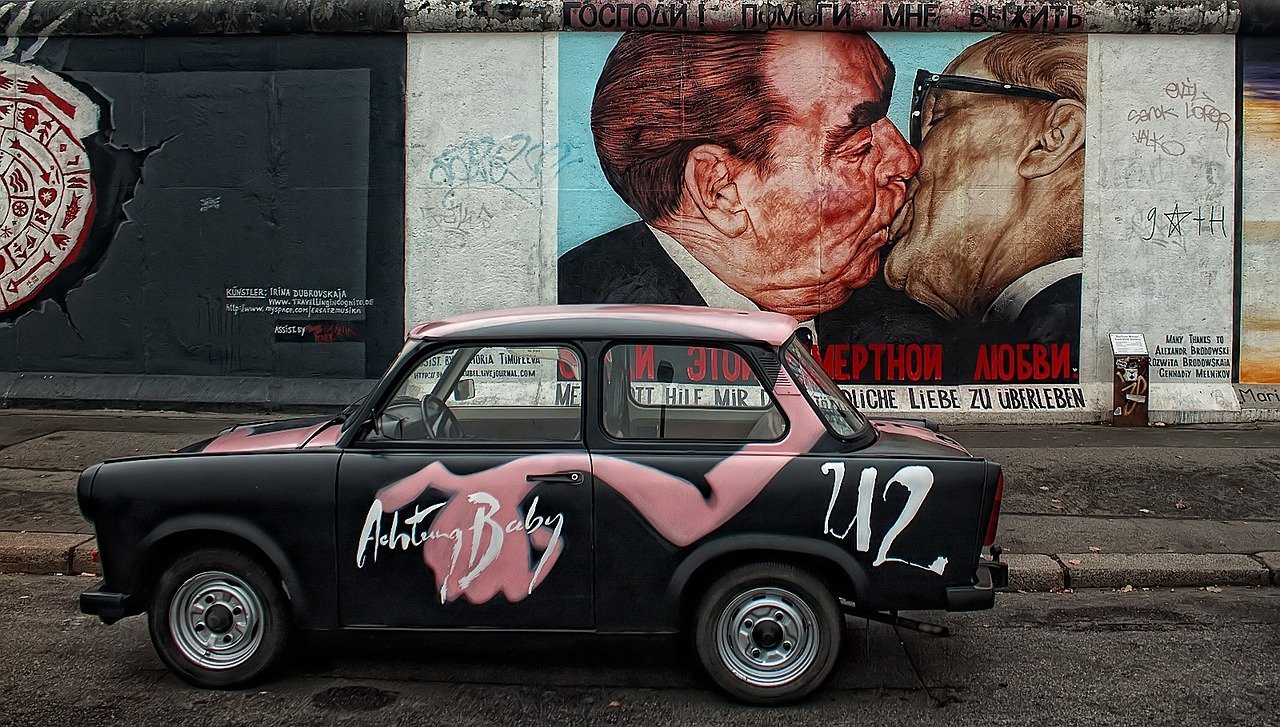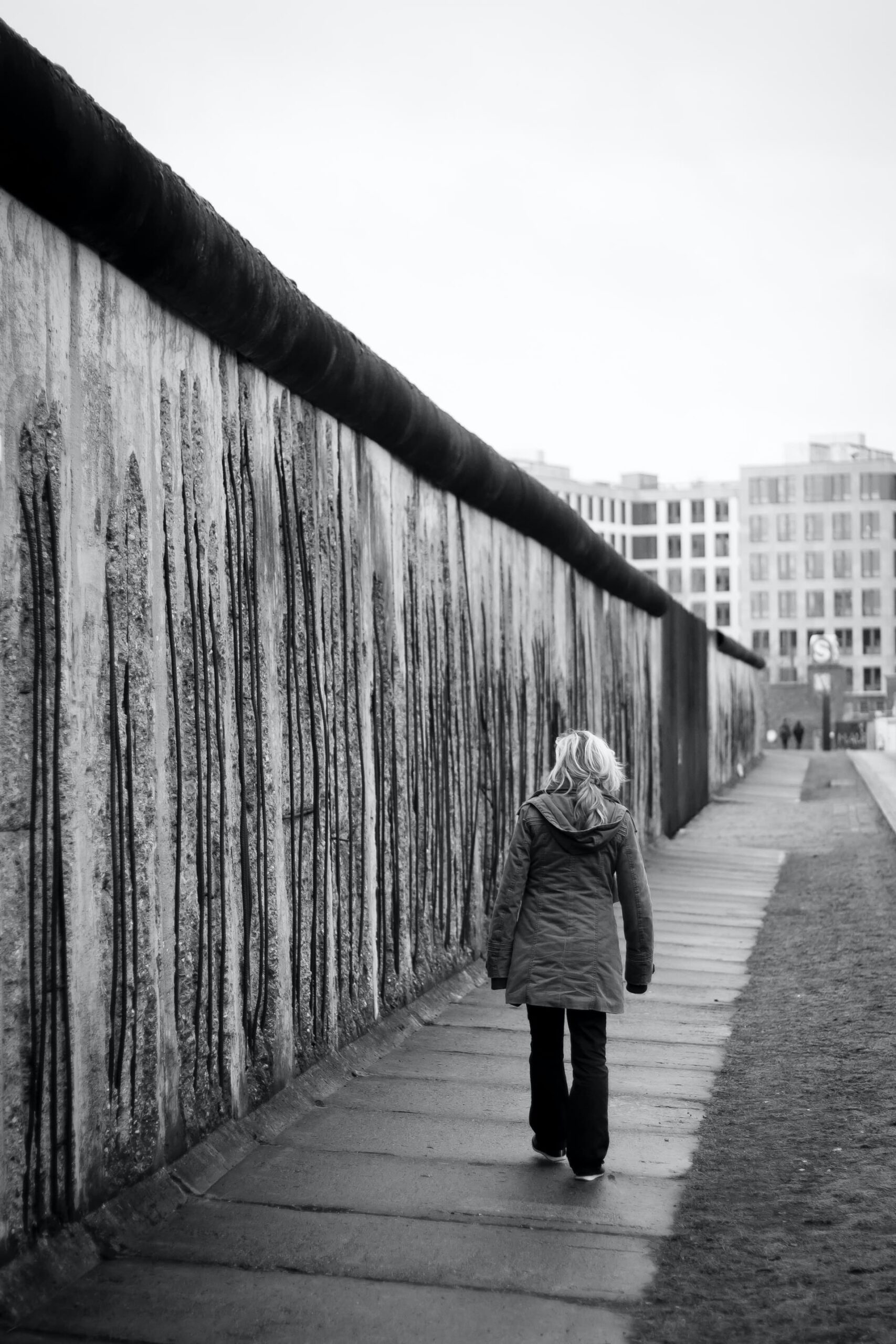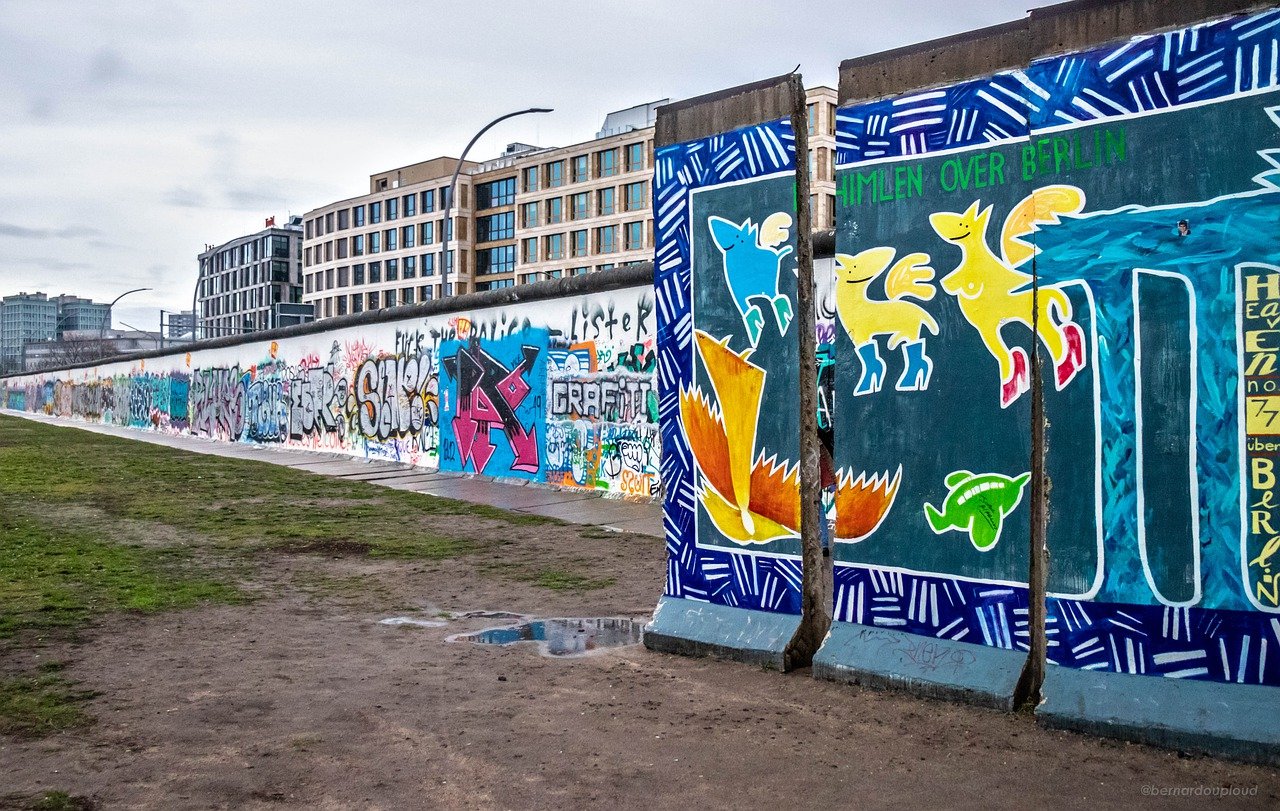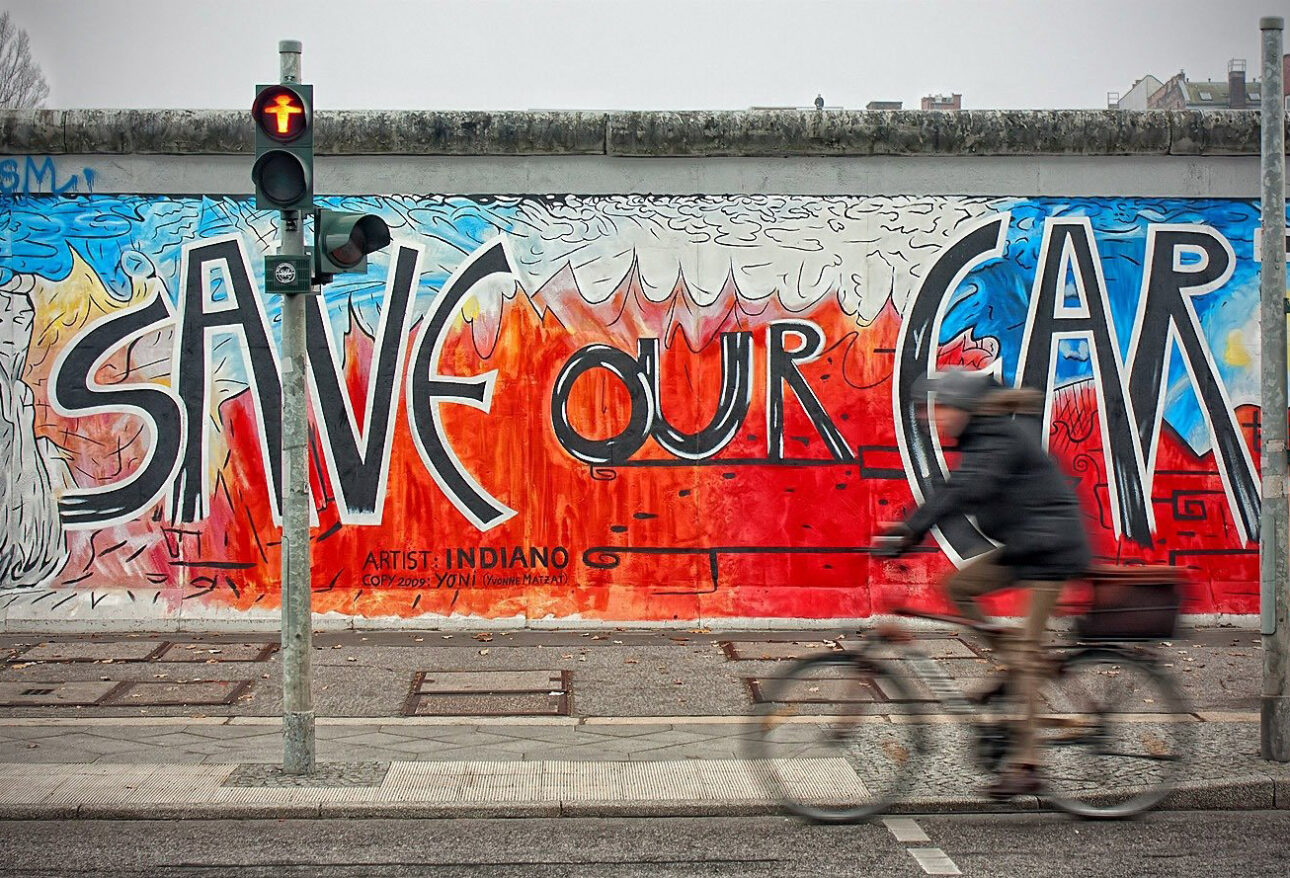One of the most significant historical monuments in the German capital is the Berlin Wall. More than one million people visited the Berlin Wall last year, making it a must-see when you are visiting Europe. In addition, this fascinating Cold War ruin is a popular destination for travelers from around the globe. They come here to learn more about its traumatic years of separating East from West during the Cold War. It is possible to see parts of the Berlin Wall in several locations in Berlin, with arguably the most prominent being the East Side Gallery and Berlin Wall Memorial. Discover how to see the Berlin Wall and where you can see it in the following article.
The History
In 2019, the Berlin Wall was marked 30 years since its fall, a shocking symbol of division between Germany, Berlin, and the Cold War that finally came down on 9th November 1989.
When one visits Berlin today, it’s hard to believe that this thriving, fun, and booming European hotspot was once divided into East and West (West Berlin still surrounded by walls), a division lasting from 1961 to 1989.
A Brief History of the Berlin Wall
At the Potsdam Conference in 1945, the Allies divided Germany into four military occupation zones after Germany surrendered on 8th May 1945. Federal Republic of Germany (FRG) was shaped by the United States occupying the southeast, France the southwest, and Britain the northwest. In addition, a socialist regime called the German Democratic Republic (GDR) was established in the northeast of the country by the Soviet Union.
Germany’s entire territory was occupied by the Soviets, including Berlin. Berlin, however, was also divided into four quadripartite districts due to its importance as Germany’s capital and the former seat of the Nazi government.
More than 2.5 million communist East Germans fled to democratic West Germany between 1946 and 1961. To curb the mass exodus, East Germany closed its border with the West on 26th May 1952, fearing an economic collapse.
The Soviet government completely sealed the border when more East Germans left since they could only get through West Berlin. As a result, the Berlin Wall was rapidly constructed between 13th August 1961 and 22nd October 1961.
In 1989, the Berlin Wall fell following the Peaceful Revolutions that called for the reunification of Germany and ended oppression, followed by the loosening of Soviet policies. However, the collapse of power and the subsequent demise of the Socialist Unity Party of Germany (SED) was precipitated by the mistake of East German party official Günter Schabowski, who said in a news conference on 9th November 1989 that the Berlin Wall would be opened immediately.
October 1990 marked the beginning of Germany’s reunification. November 1991 marked the beginning of the destruction of the Berlin Wall.

What to See & Do in the Berlin Wall
The Memorial on Bernauer Strasse is a must-see for visitors looking for the complete Berlin Wall experience. The Window of Remembrance, the Documentation Centre, the Chapel of Reconciliation, and parts of the original Berlin Wall can be found here. You can get to this location by taking the U-bahn to Bernauer Strasse or the S-bahn to Nordbahnhof.
It was declared a historical monument just one day before the reunification of Germany became official in 1990 by the East Berlin magistrate. In the present, millions of people visit this small section every year to experience how intrusive it is in person and imagine how it would have been to be surrounded and trapped in it.
Look at the Wall’s history through images and stories at the Documentation Centre. You can find all the answers to all your questions within the exhibition space, open Tuesday through Sunday from 10 am to 6 pm.
Four areas make up the Berlin Wall New Memorial Grounds, divided by topic. In this story, the main focus is on the people and how they dealt with finding a way out of the Wall. However, the most prominent part of the Memorial is here, so it cannot be missed.
The Berlin Wall and its underground route were the most attempted routes of escape during its standing. East Berlin residents were prevented from accessing the train tunnels at Nordbahnhof S-Bahn station because it was constantly closed off and guarded. Exhibits like this one help to show the desperation of Eastern governments to prevent people from fleeing. The Memorial may even have been accessed through this section.
Go to the Berlin Wall Memorial
If you want to discover more about the Berlin Wall, you should visit the Berlin Wall Memorial near S-Nordbahnhof. In the stairwells and station foyers, you can view informational displays about the Bahnhof and similar underground stations that became “ghost stations.” (The GDR banned access for its citizens to portions of Berlin’s S-Bahn system that might have been used to escape West Berlin.)
In addition to indoor and outdoor information displays, many broadcasts, as well as interviews, are available that illustrate the essential events about it, including events leading up to the creation of the Wall, the reactions to its construction in August 1963, escape attempts, how the division of the city affected the people (especially in the shadow of the Wall, as here on Bernauer Str. ) and how the city looked after the Wall fell in 1990.
In addition, the Memorial reflects on the short history of its existence, including the difficult challenge to maintain the existing border strip with original Wall pieces in the face of residents’ animosity, neighboring parish interference, and the profit-driven drive to develop as much land as possible.
Visitors can view the entire border complex with the assistance of a specially constructed viewing tower, see the small chapel built from the rubble following the 1986 destruction of the church, and imagine how the current memorial park landscape looked before his militaristic presence was maintained.
There is a walk through the interpretive park ending at U8-Bernauer Str., but you can extend your excursion and walk to Mauerpark, the meeting point of three different Berlin districts. Every Sunday, this lively strip is home to a flea market packed with original souvenirs from Berlin; in the afternoons, accessible and friendly karaoke takes over the amphitheater stage.
Bernauer Strasse, Berlin Mauer Memorial. 119. All outdoor displays are open at all times; indoor displays are available from 9:30 am to 7 pm (summer) and from 6 pm to 7 pm (winter), closed Mondays. U-8 Blumenauer Str., S-Nordbahnhof.

View Other Portions of the Wall
As well as the East Side Gallery (running along the Spree between S-Ostbahnhof and S-WarschauerStr. ), one can view original Wall portions at the Topography of Terror (between Potsdamer Platz and Checkpoint Charlie). In addition, many Wall pieces, usually outside of their original locations, can be seen all around Potsdamer Platz and Leipziger Platz.
Explore the Deutscher Historisches Museum
Visiting the German Historical Museum’s permanent exhibition will help you gain a deeper understanding of parallel developments between East and West Germany following World War II.
It is dedicated entirely to this period, and visitors can get an excellent sense of what led to German reunification, as well as the significance of the Berlin Wall and the inner-German border for East-West relations in the mid-to-late 20th century.
The German Historical Museum, Unter den Linden 2. Admission is €8/4 daily, open 10 AM to 6 PM. The S-Friedrichstr., S-Hackescher Markt, S-Alexanderplatz, and the S-Alexanderplatz bus stop is under the Linden/Statsoper.
Trace the Wall’s Path
Exactly where was the Wall located? A cobblestone line marking the former path of Berlin’s westernmost element of the Berlin Wall is commonly found in the city’s center, frequently inscribed “Berliner Mauer 1961-1989.” From the Reichstag, you can follow this line through the Brandenburg Gate, past the Holocaust Memorial up to Potsdamer Platz, and then past the Topography of Terror and Checkpoint Charlie until you reach the Spree.
Despite the overwhelming amount of highrise developments in Potsdamer Platz today, those parts of the area once stood empty, completely enclosed within the Berlin Wall complex.
Occasionally, the cobblestone line was not visible in other parts of Berlin. It follows the sector’s boundaries between West and East Berlin (which typically follow the city’s boroughs, or Bezirks, which divide the city into its various districts), which is why the Bernauer Strasse connects Mitte (East) and Wedding (West).
By studying this map carefully, the truly dedicated can determine whether they are in West Berlin or East Berlin at any given time. When you’re trying to figure out which side of a boundary you are on, you can safely guess that the one closest to the Fernsehturm (TV Tower) on Alexanderplatz is probably the right one.
The Friedrichstraße Subway Station; Connecting East and West Berlin
There is a reason why Friedrichstrasse train station has a complicated layout: it might cause you to get lost and confused.
The station served as a critical border crossing between East and West Berlin following the construction of the Berlin Wall, making it a major transportation hub in the city. An elaborate model of the system lies just outside the station, next to the Spree canal.
The West Berliners who said their goodbyes to the former GDR played a significant role in the GDR exit from West Berlin.
This beautiful historical exhibition in the building showcases the experiences of people who were subjected to rigorous controls during their exile and those who left legally and illegally.
An encounter with the border can be found at the Tränenpalast on Bahnhof Friedrichstr., Reichstaufer 17. It is open from 9 am to 7 pm Monday through Friday (closed Sundays), and 10 am to 6 pm on weekends and holidays.
Turn Your Back on Checkpoint Charlie
Berlin’s Checkpoint Charlie remains, however, the most notorious of all crossing points. In this period, Charlie was the third of three letters of the military phonetic alphabet (Alpha, Bravo, Charlie), used by Allied soldiers to denote foreigners and military personnel entering East Berlin. As a result, Charlie appears in nearly every East-West spy novel or film set during the period.
Stand with your back to Friedrichstr and stare at Friedrichstr instead of gawking at the replica booth flanked by sandbags and dressed in costume uniforms to gain an accurate perspective on the crossing. Everything between Zimmerstr. And this intersection is dangerous. You will notice that this area is much larger than the tiny booth will make it seem due to the highrise buildings surrounding it. The surrounding fences are covered in an educational, historical exhibit which is also worth reading.
Corner of Zimmerstr. and Checkpoint Charlie. Frederickstr. No admission charge, open all hours. Kochstr., U6.
Visit an East German Apartment.
The U5 underground line takes you east from Alexanderplatz into the heart of GDR Berlin: Through Lichtenberg and Marzahn, you will see buildings that reflect the typical heights and prefab construction styles once (and still) ubiquitous in East Germany. Hellersdorf’s U-Cottbusser Platz is where your ride ends. For example, at U-Cottbusser Platz, one of Berlin’s housing management companies maintains an authentic three-room apartment with original, charming furniture.
In Hellersdorf, where apartments were built rapidly to accommodate families with young children, over half the 42,000 flats on display were identical to the one on display.
Haus am Museumsplatz, Hellersdorferstr. 179. Admission is free on Sundays from 2-4 PM (other times by arrangement). Cottonbusser Platz, U5.

Take into Consideration Your Daily Activities
In traditional and multimedia presentations, including original videos and interviews with former GDR citizens, situated in the Kulturbrauerei in Prenzlauer Berg, reveals a chasm separating the socialist utopia promoted by the GDR government from the reality of everyday life in the GDR, focusing on the way that the government-controlled its citizens. In addition, there are many original GDR designs on display, including, of course, an original Trabi automobile.
In der Kulturbrauerei, Knaackstr., Alltag in der DDR – Museum is located. 97. It is open Tuesday through Friday between 10 am and 6 pm (until 8 pm on Thursdays). Admission is free. Eberswalder Strasse U2.
Examine the Stasi Files
You can take an informative tour near Checkpoint Charlie of the Stasi state security apparatus to understand the extent to which the GDR exploited its citizens, along with the methods employed to repress and monitor suspected dissidents. This information center is part of the Stasi archive, so historians, researchers, and citizens can access the documents painstakingly compiled by the SED apparatus.
Exhibition of the Stasi Party – Bildungszentrum BStU, Zimmerstr. Ninety. The center is open from 10 a.m. to 6 p.m. daily. Kochstr., U6.
Explore the Berlin Wall with a Guide
You can explore the Berlin Wall and nearly all the locations mentioned in this article with Mauerguide, a GPS-guided audio tour. It costs €10/day (8 hours for €8), and students are given a €3 discount. The Bernauer Str., Brandenburg Gate, or Checkpoint Charlie locations pick up/drop off.
The Berlin Underworlds e.V. This tour costs €13 / €10 and takes place in Berlin’s Unter der Berliner Mauer (M) subway station. Tours begin at 3 pm near S-Gesundbrunnen every Friday and Sunday and every weekday during the summer.
For €24, Fat Tire Bikes offers a five-hour Cold War and Berlin Wall tour. Every Monday, Thursday, Saturday, and Sunday (summer) at 10:30 am.
On Saturdays, Berlin on Bike offers Wall Eyewitness tours for €25; the previous cost is €19. Both tours begin at the Kulturbrauerei (U2-Eberswalder Str.).
Here Are Some Resources for Schools
A Memorial tour that includes a seminar for schools and a bike ride along the former border strip is available from April to September. In addition, a moderated discussion with witnesses is open to students over 16 years of age.
Hours of operation (additional information)
Documentation Center / Visitor Center
- From Tuesday to Sunday, 10 am to 6 pm.
Watchtower
- On Mondays from 10 am to 4 pm
- From Tuesday to Sunday, 10 am to 6 pm.
- There is a 15-minute entrance deadline
The Memorial Site Will Be Hosting an Exhibition
- 08.00 – 22.00 Monday through Sunday





